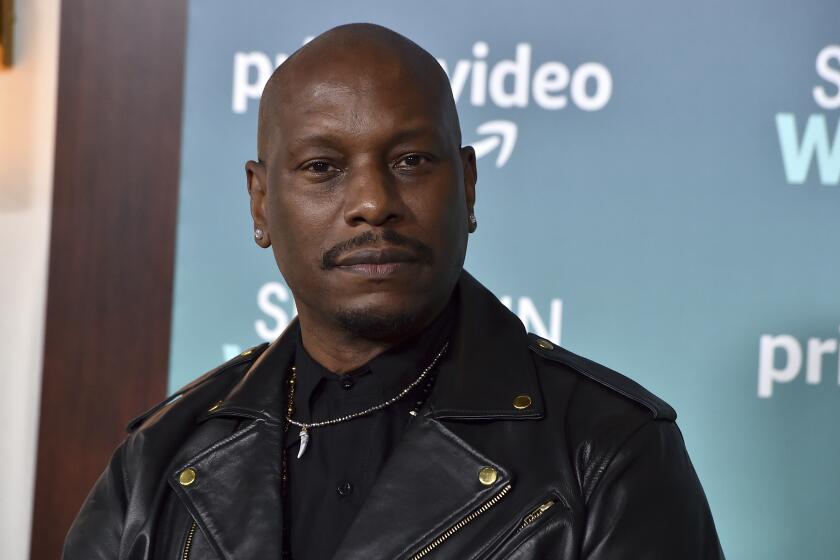Critic’s Notebook: Film isn’t dead, it’s just misused
These are tough times to be a film critic. Not because the number of quality films for adults is diminishing — it is, but that’s an old story — but because the movies are not getting the respect they should.
Everywhere I turn, people are writing stories insisting that “the conversation is moving away from movies to TV” and “television is the new cinema” or asking questions like “can the cinema still thrill?” There was even a story positing that film school graduates would rather — oh, the horror — run a TV series than direct a feature.
What is behind our culture’s renewed infatuation with the blandishments of the small screen? Is it just the desperate need of the relentless media hype machine to have something new to write, blog and tweet about, or has the societal pendulum irrevocably swung from one form of entertainment to another?
PHOTOS: Billion-dollar movie club
Given my job description, it’s no surprise that I’m an unreconstructed, unapologetic partisan of the cinematic experience, so much so that I don’t really believe that movies need any kind of defense, from me or anyone else. But all the hubbub in the chattering classes has given me an excuse to explore the situation to figure out what I think is going on.
When it comes to the tale of the tape in the battle between the movies and TV, two areas of comparison are relevant. The first is the nature of the medium itself, the second is what’s available on it. Even though movies are ahead on points in the first match, the second contest has a more complex outcome.
To restate the obvious, you watch TV at home, you have to go out to experience the movies. Television makes it easier to partake of its riches by coming right into your house, where no more than the push of a button starts things up.
That at-home nature makes it easier for TV to use its most impressive attribute, the long-form experience. When talented creators like David Simon and his “The Wire” team are involved, the ability to spin a story out over dozens of hours and multiple years can lead to exceptionally impressive results.
But the glories of long form notwithstanding, at the end of the day television is essentially a vest pocket medium. It doesn’t have the capacity to envelop you completely in an experience the way old-fashioned wide-screen epics such as “Lawrence of Arabia” could, not to mention modern 3-D extravaganzas “Avatar” and “Gravity.”
And TV doesn’t allow you the extraordinary shared emotional pleasure that seeing something in a huge auditorium with like-minded individuals provides. Speaking of long form, watching Abel Gance’s 51/2-hour 1927 epic “Napoleon” as part of a rapturous crowd of 3,000 in an Oakland movie palace a few years back was an experience to treasure for a lifetime.
Succinctly making the case for the movies is, of all people, George R.R. Martin, the writer of the “Game of Thrones” novels and someone who has benefited mightily from television’s reach. When the revenue started coming in, Mr. Martin was not content with presumably purchasing a top-of-the-line home-viewing system. Instead he bought the jewel-box Jean Cocteau movie house in Santa Fe, N.M. “If you’re watching it alone in your living room,” the writer told National Public Radio, “it just doesn’t have the same impact.” Nuff said.
It’s in the second contest, what’s available on what medium, that high-end cable TV and its decidedly mature content, programs such as “Mad Men” and “Breaking Bad,” would appear to have an edge. But one can argue that the situation here is not so much that content on television is so wonderful, it’s that content in the movies is so bad. The theatrical medium has in effect been fighting this battle with one hand tied behind its back.
Books can and have been written about what has happened to movie studios in recent decades, but the short version is that the industry mortgaged its soul in its search for ever-increasing profits, a search that led inevitably to the land of sequels, comic book adaptations and, yes, sequels to comic book adaptations.
No longer stand-alone entities as they were in Hollywood’s heyday, the major studios are owned by enormous publicly traded conglomerates more attuned to stock prices than the quality of the films. The modern studio has taken a medium that once astonished the world by its gift for dramatic stories and, frankly, run it into the ground.
The people who pioneered cable TV saw this abandonment of adults as an opportunity and ran with it. While studios grew more slavishly attached to the lowest common denominator, chastising screenwriters about work that was “too smart for the room,” cable TV was taking the diametrically opposite approach.
About a decade ago, I had lunch during the Sundance Film Festival with Colin Callender, then president of HBO Films. What he told me was obvious but central. With studios gravitating toward sameness, he felt a mandate to go in the opposite direction. HBO had a subscriber base that paid money every month for something different, for things that couldn’t be found elsewhere, and he had a responsibility to fill that need. The results speak for themselves.
In fact, there is little that TV does that film couldn’t do if it put its mind to it, that film wouldn’t be doing right now if it hadn’t cravenly abdicated its adult entertainment responsibilities and sold its birthright for the pottage of worldwide grosses. Films like “Captain Phillips,” “Lincoln” and “Silver Linings Playbook” do exist, but they are few and far between.
The whole situation unexpectedly reminded me of a story from my sportswriting days at the Washington Post, an anecdote related by the late Dave Brady, the Post’s boxing writer at the time.
It seems a bulletin had come out over the wire services that a venerable boxer Dave knew had died. Seeking more information, Dave called the boxer’s home and was shocked to have the man answer.
“Bill,” Dave blurted out, “I thought you were dead.” “Nah,” the man replied, “I ain’t even left the house.”
The movies aren’t dead, they ain’t even left the house. The problem is that making the kinds of movies that would wake them up and check on their pulse has gone out of fashion. TV is hardly the better medium, it’s just been using what it has better than its rival. How long this will go on is anyone’s guess.
More to Read
Only good movies
Get the Indie Focus newsletter, Mark Olsen's weekly guide to the world of cinema.
You may occasionally receive promotional content from the Los Angeles Times.











